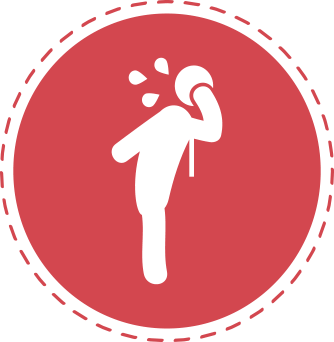


Heart failure diagnosis remains challenging because symptoms are non-specific and patients may not exhibit any symptoms in early stages of the disease.[4]

Shortness Of Breath

Swelling Of Legs

Fatigue

Chronic Cough

Appetite Loss

Nausea
Heart failure is most commonly caused by damage to the heart muscle, potentially as the result of a heart attack or cardiomyopathy (disease of the heart). Other causes may be congenital heart disease, viral infections of the heart muscle, abnormal heart rhythm and cancer treatments, like chemotherapy. Conditions, such as diabetes, may aggravate heart failure. Early management of modifiable risk factors such as hypertension, diabetes, obesity, cholesterol and smoking can help reduce the risk of developing heart failure.5,6
Past Heart Attacks
Coronary Artery Disease
High Blood Pressure
Heart Valve Disease

Heart Muscle Disease
Congenital Heart Defects
Lung Conditions
Alcohol/Drug Abuse
Heart Failure Can Be Detected Early & Accurately With A NT-PROBNP Test
After an examination, doctors will advise tests and procedures to help determine the nature of the heart failure. Blood tests and imaging tests can reveal various things such as the type, class and severity of heart failure.
The severity of heart failure can be judged by how much the patient’s physical activity is limited. The New York Heart Association (NYHA) Functional Classification is one of the most frequently used heart failure classification systems, in which each class describes a patient’s symptoms while performing physical activities. Classifying heart failure based on how a person functions during exertion is a strong indicator of the patient’s outcome.[7]

Cardiac disease detected, but no symptoms shown and no limitation in ordinary physical activity.

Mild symptoms and slight limitation during ordinary activity.

Significant limitation in activity due to symptoms. Comfortable only at rest.

Severe limitation in activity. Symptoms even while at rest.
The aim of treatment is to prolong life, improve qulity of life, and prevent repeated readmission.
1. Ponikowski P, Anker SD, AlHabib KF et al. Heart failure: preventing disease and death worldwide. ESC Heart Failure. 2014;1:4–25. doi: 10.1002/ehf2.12005. and https://www.ncbi.nlm.nih.gov/pmc/articles/PMC3913650/
2. https://www.escardio.org/static_file/Escardio/Subspecialty/HFA/WHFA-whitepaper-15-May-14.pdf and http://www.j-pcs.org/article.asp?issn=2395-5414;year=2016;volume=2;issue=1;spage=28;epage=35;aulast=Chaturvedi
3. https://www.ncbi.nlm.nih.gov/pmc/articles/PMC4175654/
4. Watson RD, Gibbs CR, Lip GY. ABC of heart failure. Clinical features and complications. BMJ. 2000;320(7229):236–239. doi:10.1136/bmj.320.7229.236
5. https://www.mayoclinic.org/diseases-conditions/heart-failure/symptoms-causes/syc-20373142
6. Hajar R. Risk Factors for Coronary Artery Disease: Historical Perspectives. Heart Views. 2017;18(3):109–114. doi:10.4103/HEARTVIEWS.HEARTVIEWS_106_17
7. Lainchbury JG, Richards AM. Exercise testing in the assessment of chronic congestive heart failure. Heart. 2002;88(5): 538–543. doi:10.1136/heart.88.5.538